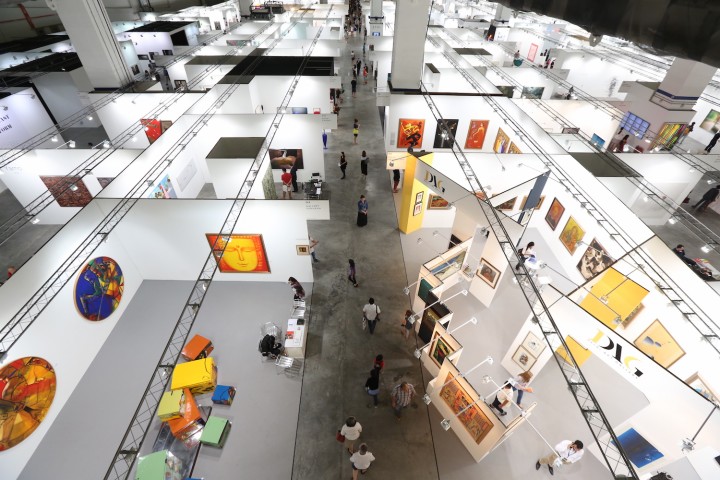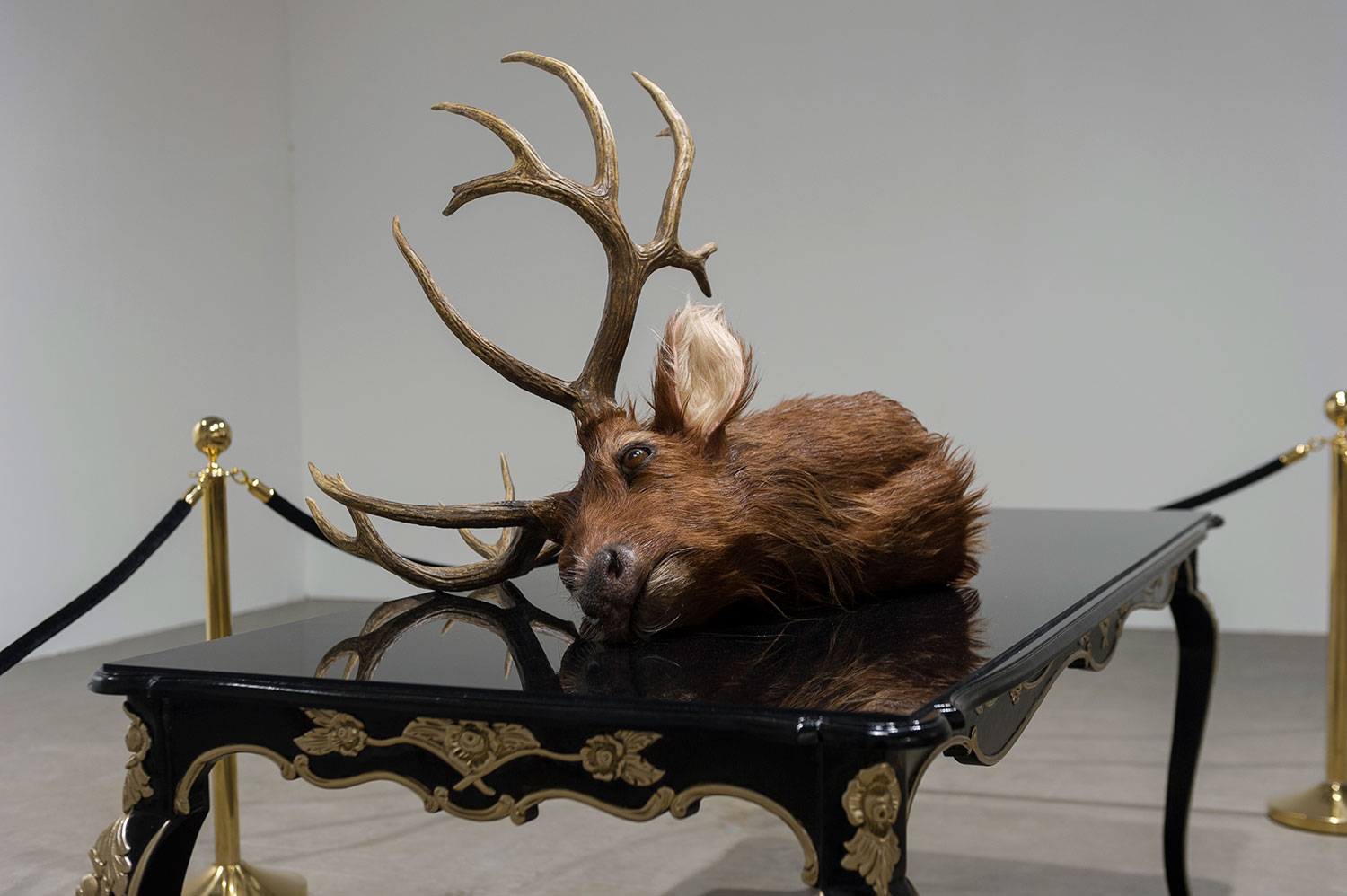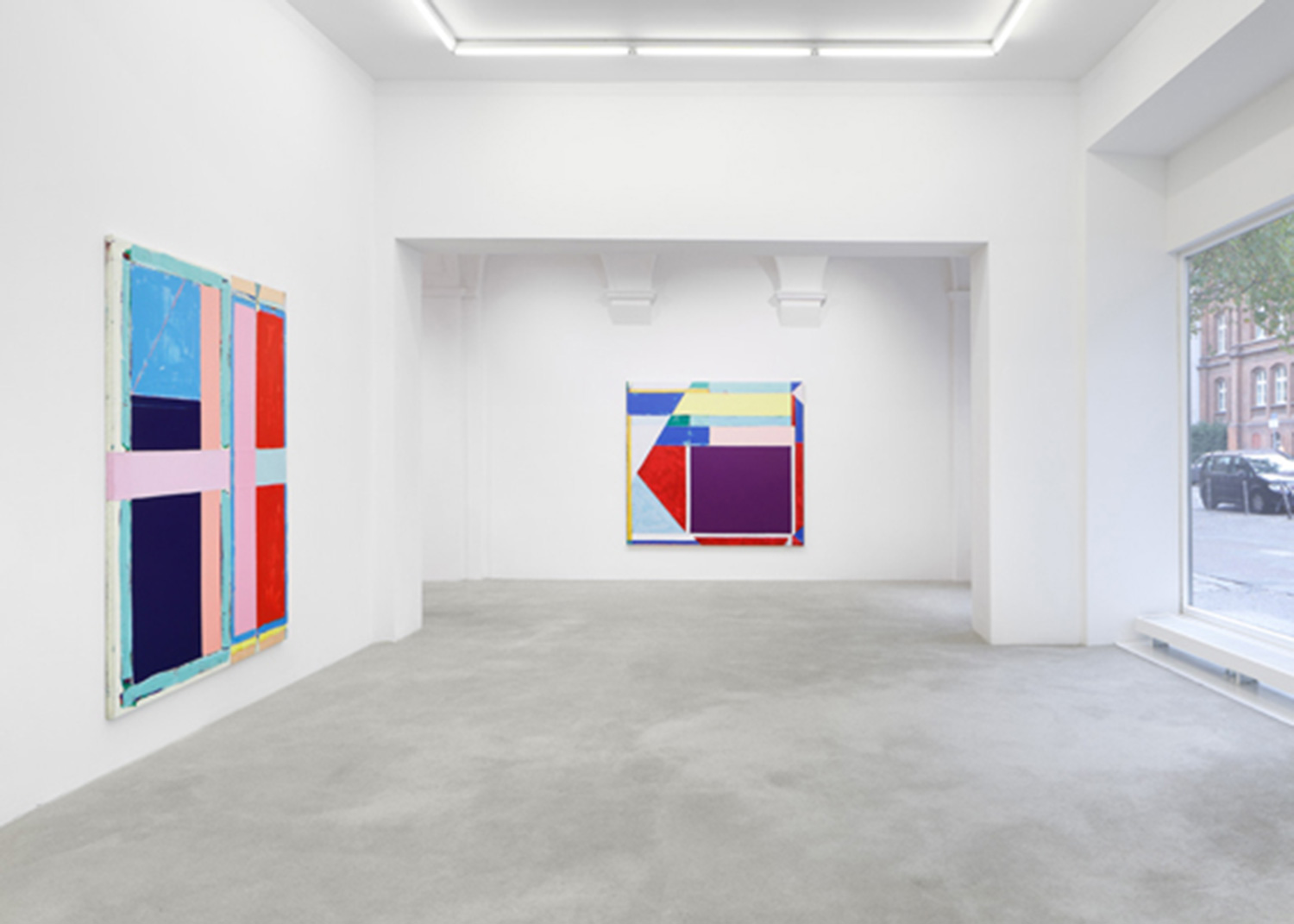Hailing itself as the flagship of Southeast Asia, the 5th edition of Art Stage Singapore has evolved considerably since its launch in 2011, reflecting the dramatic development of the Singapore art scene over recent years. As the government spearheads a national push for the visual arts, particularly within the commercial sector with the launch of Gillman Barracks in 2012 — a cluster of commercial galleries in an old converted military zone — this year will also see the openings of the National Gallery Singapore and the Singapore Pinacothèque de Paris.
Positioning itself as a hub for the region, “We Are Asia” continued to be the much-repeated tagline during the week; the fair does lean toward more of a regional approach compared with Art Basel Hong Kong, which has developed a more international flavor since joining the mighty Basel group. Fair director Lorenzo Rudolf told us: “There’s been a huge increase in participation from galleries in the region. We have become a catalyst for all these markets.”
Of the galleries in attendance this year, 70% were from the Southeast Asian region, including Cambodia, the Philippines, Indonesia, Thailand and Vietnam. Yet wandering around the booths, it was hard to ignore the number of big-name Western and regional artists working within traditional media — a reflection of the taste of the majority of Singaporean collectors.
The Southeast Asia Platform was the definite highlight and provided a welcome opportunity to see some edgier, raw and conceptual works. Titled “Eagles Fly, Sheep Flock – Biographical Imprints” and curated by independent Singaporean curator Khim Ong, it encompassed over fifty works by thirty artists. After spending time visiting studios and working with artists, Ong tackled the challenging task of selecting works from such vast and disparate emerging scenes by focusing on individual artist practices. Ong told us: “While there is no way to define a ‘Southeast Asian art,’ by gathering these individual practices you get a sense of what is happening.”
Considering the lack of strong institutional infrastructure in the region, Ong and Rudolf both acknowledged that a lot of art has been driven by the art market. Ong said: “I think it’s important to generate more scholarship. Of course each country has their own universities and some institutions that do that, but I think this platform allows for it to be exposed to a larger international audience too. It gives you the context, which tells you a bit more about the development, rather than just seeing it as a purely selling platform.”
New special exhibitions for 2015 also included the Russia Platform and Video Platform. Olga Sviblova, Director of the Multimedia Art Museum, Moscow, presented two video works by the much-loved Russian art collective AES+F: Allegoria Sacra and The Feast of Trimalchio. Video Stage, curated by Paul Greenaway with special selections by Chi-Wen Huang and Ute Meta Bauer, showcased more than sixty video works from the region and around the globe.
Outside of the walls of Marina Bay Sands, the whole city was abuzz with awards receptions, gallery openings and public talks revealing a concerted effort by various organizations to use the fair as leverage for introducing their programs to an international audience.
The Signature Art Prize and Exhibition at the Singapore Art Museum, now in its third year, is an award for artists in the Asia-Pacific region who have created compelling contemporary artworks during the last three years. Out of the fifteen finalists, from New Zealand, Vietnam, Thailand, China, Taiwan, Japan, South Korea, Pakistan, India, Bangladesh, Indonesia and the Philippines, the Singaporean artist Ho Tzu Nyen was awarded the SG$60,000 grand prize for his four-channel video and installation work PYTHAGORAS (2013), an immersive piece that explores the philosophical notion of the unseen.
Another award event was the Prudential Eye Award, which focuses on emerging artists from across Greater Asia. The reception, which took place at Marina Bay Sands, featured thirteen prizes, with six categories of Best Emerging Artist using various media. The uber-hip Japanese collective ChimPom, whose work critiques aspects of Japanese society with strong doses of humor, wit and melancholy, was named as the Overall Best Emerging Artist. Future Perfect at Gillman Barracks won Best Gallery Supporting Emerging Asian Contemporary Art while “No Country: Art from South and Southeast Asia” at the CCA won Best Exhibition of Asian Contemporary Art.
With such a peak in energy and activity over the week, Art Stage Singapore serves as a much-anticipated gathering for many industry players and visitors across the region while offering international collectors an insight into Southeast Asia. The question is how to maintain some of that momentum and productivity within its own art scene after the fair. Ong reflects: “Hopefully, moving on, it won’t just be initiatives from the government but from the ground up — everyone will take the opportunity to showcase.”



